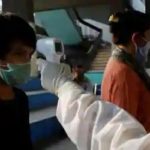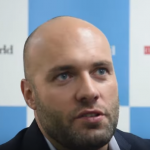The cloud-based health management platform not only connected people to doctors and facilitated follow-up consultations but also roped in the nearest medical stores to ensure people received the prescribed medications.
Growing up in a family of doctors in a village in Rajasthan’s Jhalawar district, Shreyans Mehta knew that it is loyalty that often creates legacy in rural health care. In the absence of trustworthy doctors nearby, most villagers spent between ₹800 and ₹1,000 to go to cities for treatment, while others suffered at the hands of local quacks. So when his father could not go to the hospital to see patients because of a slip disc in 2014, Mehta made sure people could reach him over phone and video. The experience prompted him to travel across villages in Rajasthan, Uttar Pradesh (UP), Madhya Pradesh (MP) and Bihar to find answers to a couple of questions: To what extent could technology improve accessibility of health care in remote rural areas, and how can it be scaled up?
Mehta says visits to these villages and meetings with local public health officials made him realise that neither the people nor the government had any health care records or data. “I wanted to find a solution to help villagers find local doctors from similar cultural backgrounds who can understand them, and whom the patients can trust. I even wanted to help people digitise their records, so that it becomes easier to identify and predict health trends,” he says.
The 30-year-old Mehta also understood that any health care solution in rural areas cannot just solve one problem. “If I help people consult a doctor, but don’t improve their access to medicines and follow-ups, they will end up going to the cities again,” he says. So, along with friends and fellow engineers Nikhil Baheti and Saida Dhanvath, Mehta launched MedCords in 2017 in Kota, Rajasthan.
Want to publish your own articles on DistilINFO Publications?
Send us an email, we will get in touch with you.
The cloud-based health management platform not only connected people to doctors and facilitated follow-up consultations but also roped in the nearest medical stores to ensure people received the prescribed medications. Going a step further, the trio launched a platform called Sehat Sathi for local pharmacists. This was for people who did not own or know how to operate smartphones. They could go to the nearest medical shop and schedule a consultation with the help of the shop owner, who was often someone they recognised and were comfortable with. “When it comes to technology, some human touch and hand-holding are necessary in rural areas,” says Mehta.
MedCords raised seed funding of $1 million from Info Edge and WaterBridge in 2018. It started monetising its services only in January through affordable yearly and per-consultation subscription models through its app Aayu, which also stored health records digitally. In March, the startup raised another $3 million through angel investors Info Edge, WaterBridge and Astarc Ventures. It is yet to turn profitable.
“Today, we have 30 lakh registered patients from Rajasthan, UP, MP, Bihar, Maharashtra and Gujarat; 5,000 registered doctors and about 16,000 local medical stores on the platform,” says Mehta, whose startup got a huge push due to the Covid-19 lockdown that made people look for health care options either online or nearest to them. “We used to get about 3,000 calls daily on the 24×7 helpline that was set up to assist people navigate the platform. And when Prime Minister Narendra Modi spoke about Atmanirbhar Bharat, we felt we were on the right track—that a hyperlocal, end-to-end channel powered by technology is a feasible and scalable solution to many problems in rural primary health care today.”
According to the 2011 Census, about 69 percent of India’s total population lives in rural areas. On paper, the public health system in these regions is an elaborate structure with multiple levels: First, sub-centres that cater to about five villages with a population between 3,000 and 5,000 people. Then there are primary health centres (PHCs) for every six sub-centres, followed by community health centres (CHCs), sub-district and district hospitals. Then come the medical colleges.
However, a report titled Strengthening Public Health Delivery, published by the Confederation of Indian Industry (CII) on August 17, suggests that the public health system suffered from several issues, including shortage of skilled doctors and nurses, auxiliary nursing midwives (ANM), Assisted Social Health Activist (ASHA) and anganwadi workers, besides lack of equipment and diagnostic tools.
Moreover, out of a total of ₹67,112 crore, the Union health budget allocation to the National Rural Health Mission (NRHM) in 2020-21 was ₹27,039, a 3 percent reduction from the estimated amount.
Various other shortcomings have been observed. As per 2018 data from the ministry of health and family welfare, there is a shortage of 32,900 sub-centres, 6,430 PHCs and 2,188 CHCs. At the same time, there are only about 9 lakh registered medical professionals, which indicates a 46 percent shortfall of doctors, and an 82 percent shortfall of specialists, including surgeons, gynaecologists, physicians and paediatricians across PHCs. Experts say the reasons not many qualified doctors want to serve in rural areas include poor working environments, facilities and remuneration.
Source: Money Control








